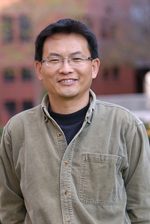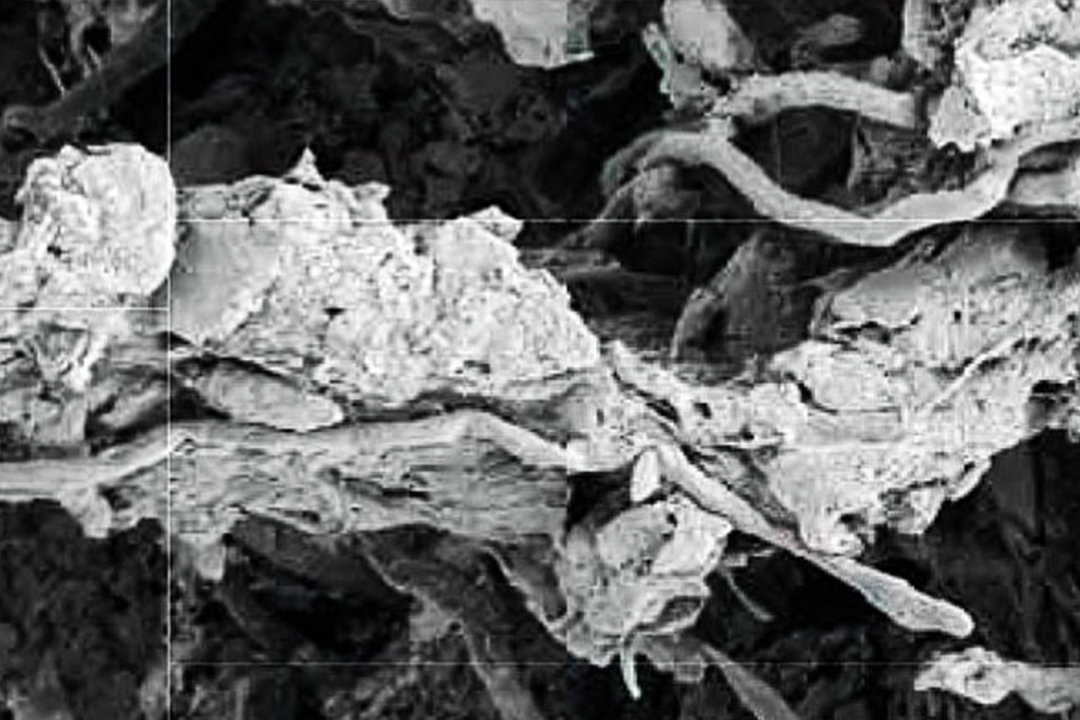Scientists have long known that microbes like bacteria and fungi are crucial to weathering rocks and releasing precious nutrients into soil. But widely held assumptions about how the chemical and physical breakdown of minerals takes place—and which microbe plays a starring role in the geological drama—may be all wrong, according to a new research study by Henry Teng, associate professor of chemistry and geoscience.
Traveling deep into the mineral mines of China, Teng and a team of researchers and students identified a fungus that is believed to be a surprise key player in the cycle of plant and tree growth. Unlocking the method by which the fungus consumes its mineral meal, Teng’s findings, published in the journal Geology, may help build better models of plant growth and lead to an agricultural bounty.
In most cases, plants don’t extract nutrients from the soil themselves. They rely heavily on microbes to break down rocks and release material like iron, nitrogen and phosphorous—a process known as bioweathering. “Most of the nutrients in rock and soil are in geological form,” Teng said. “Roots cannot directly use them in that state. They need help. Plants depend on [microbes] to break them down into a form suitable for their roots.”
In the past, researchers estimated that fungi contributed just 1 percent of total bioweathering. But Teng’s observations suggest that they are actually responsible for as much as 40 to 50 percent, a finding that has broad implications for global agricultural issues like maintaining soil health and promoting crop and vegetable growth.
Over two summers in 2013 and 2014, Teng led his team of scholars and students from Nanjing University into the serpentine mines of Donghai, China. The expedition was searching for microbes that could readily extract magnesium from rocks and lead to energy-efficient and environmentally friendly carbon sequestration. While culturing dozens of microbes, the team discovered that one fungus—Talaromyces flavus—was a particularly voracious consumer of magnesium and iron.

Returning to his lab at the Science and Engineering Hall (SEH) with the fungus in tow, Teng had a novel idea for testing his discovery. Most microbe experiments are conducted by culturing fungi and mixing it in a solution with mineral samples. What would happen, Teng surmised, if the fungus was instead attached directly to a rock, mimicking real-world bioweathering conditions? “In nature, microbes are crawling on the surface of the rock,” Teng said. “They don’t stay in a suspended state like in a solution.”
Teng stuck the T. flavus cells on top of mineral samples. He trained super high-resolution microscopes on the experiment and observed the step-by-step process by which fungi attack minerals.
As Teng recorded, the fungi first unleashed acid on the rock’s face, dissolving surface minerals to get to the food below. Then, it released chemicals called siderophores that extract their iron food. “Fungi don’t have brains, but they are smart enough to recognize the rock’s surface and to start generating the acid and chemicals to deconstruct that material,” Teng said. “They don’t like to use up any energy unless they know they are going to get food out of it.”
Finally, the fungi extended fast-growing fungal filaments called hyphae which cut into the remaining rock with a pressure 100 times greater than car tires. The pressure disrupted the rock’s internal bonds; what was once a crystalline structure became amorphous. Teng’s study revealed that microbes not only use chemical forces like acid to destroy the mineral but also employ mechanical methods, like the powerful filament extension.
Previous studies that mixed minerals and fungi in a solution registered only weak levels of acid and siderophores, leading researchers to believe that fungi like T. flavus had limited impact on bioweathering. But Teng’s work suggests that scientists have underestimated how much weathering occurs at the fungus-mineral interface spot, and that fungi is actually an important nutrient extractor. Apart from providing a better understanding of how fungi and minerals interact, Teng’s research could improve agricultural practices around the world and lead to more effective methods for sustaining the global food supply.


